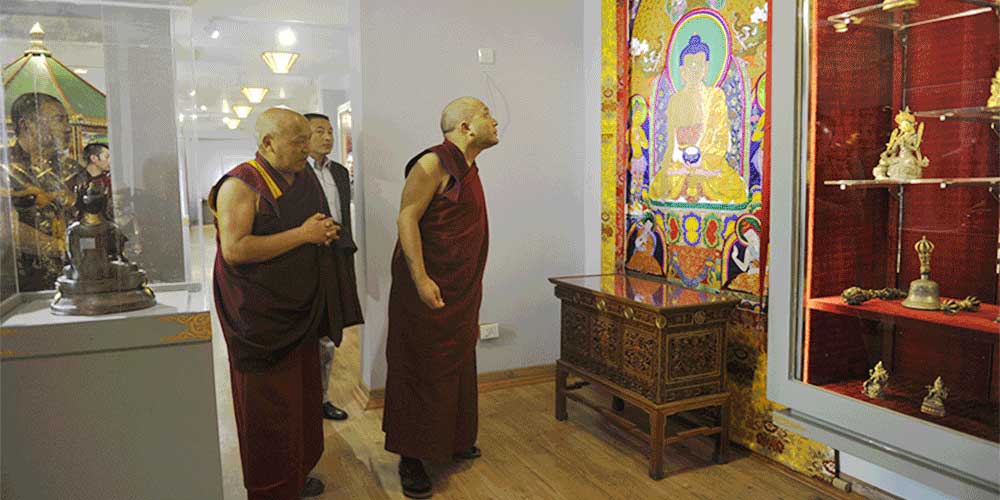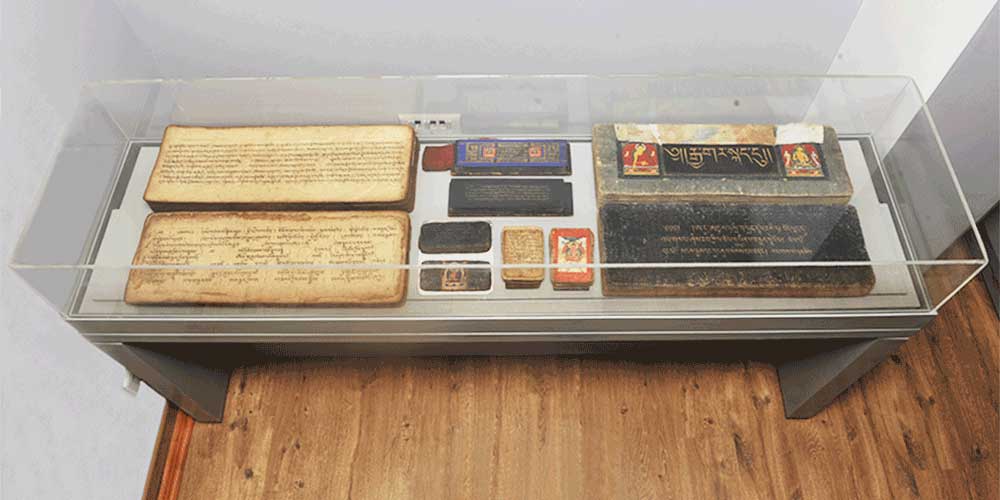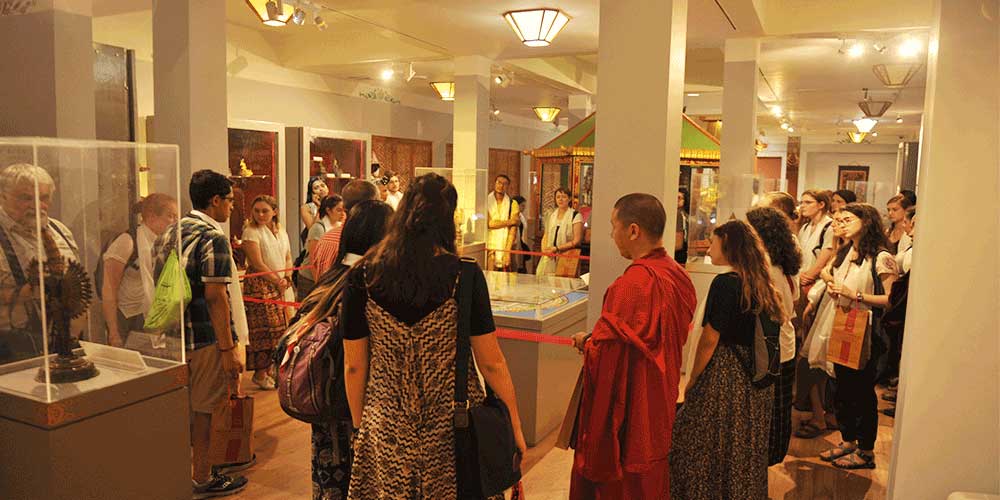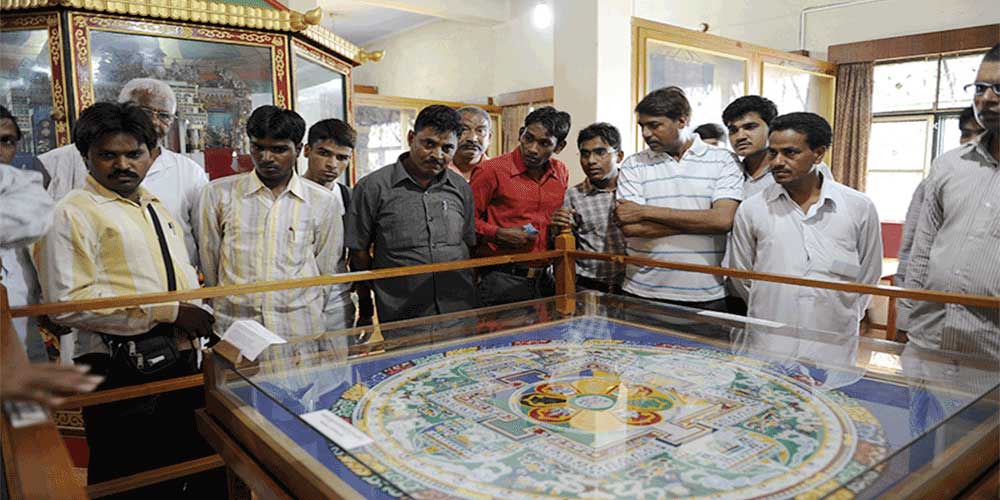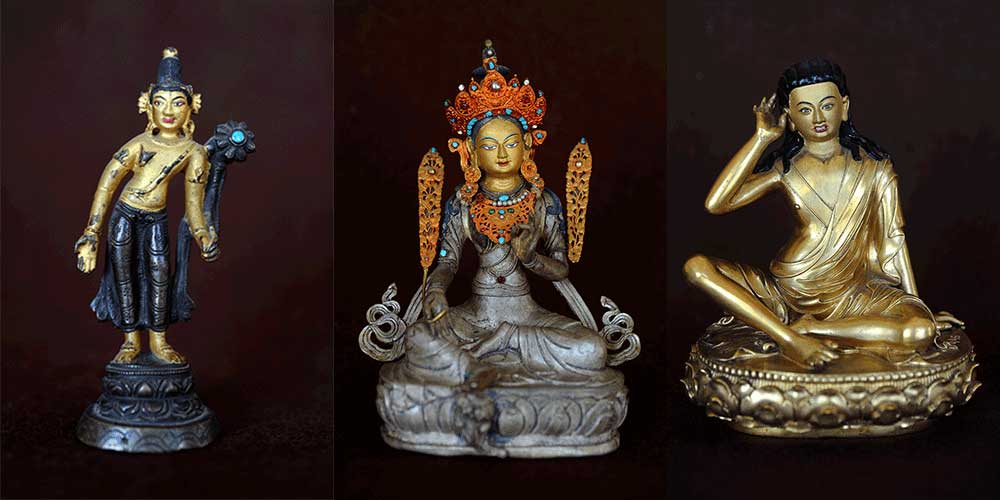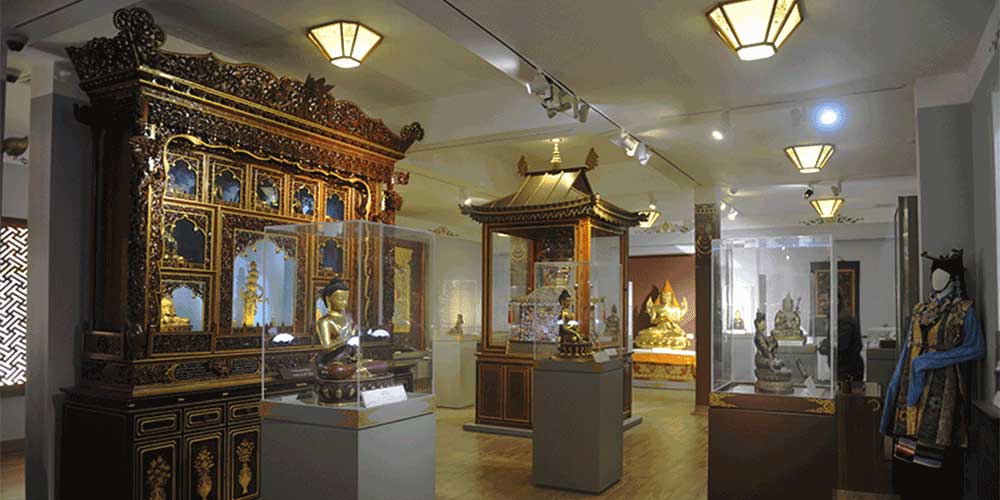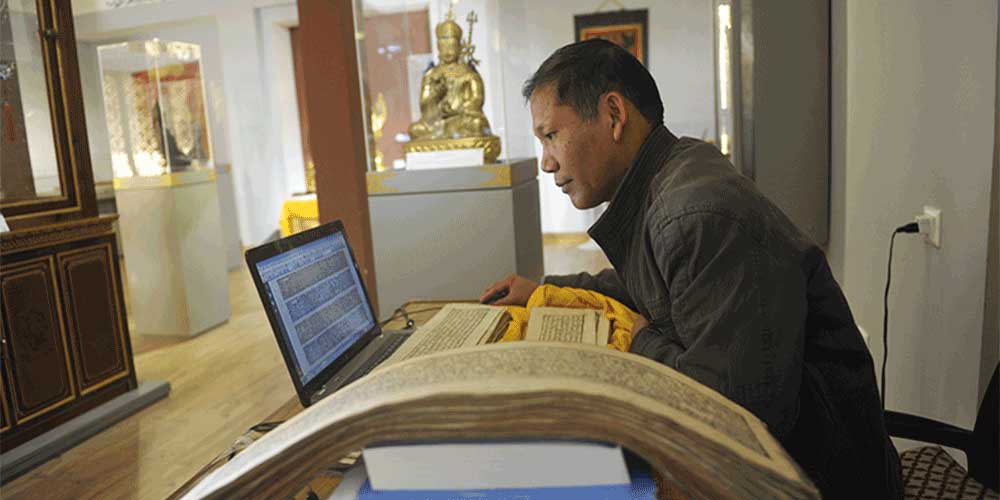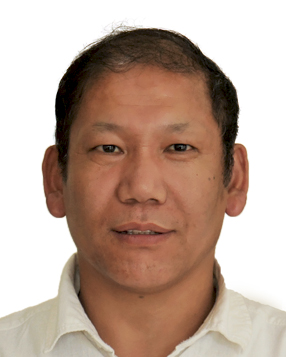Museum
The museum houses various collections of rare artifacts of Tibetan culture, which was brought into exile by Tibetan refugee’s post 1959 and mainly presented to His Holiness the Dalai Lama. As the collection grows museum open its doors to the public in 1974 consultation with the National museum of India.
The way these artifacts were brought from Tibet to its present-day setting in the LTWA narrates a unique story of Tibetan and their escape from the mass cultural onslaught brought upon them in 1959 and the part of culture they intend to preserve and pass on to the future generations.
Each of these objects is a creation of a master craftsman, who inherent his skill from his master and the craftsmanship is passed on from generation to generation. The collection in the museum reflects deeper and perennial values of human life such as compassion, a sense of universal responsibility, inter reality and wisdom. The collection in display is not only products of a people and its civilization in various stages over many centuries, but also represents a profound, sophisticated and still relevant to human spiritual experiences.
Since becoming functional in 1974, there had been no major renovation due to limited expertise and financial constraints. In 2012-13 it was expanded, renovated and restructured.
In the new setup the overall display of items in the museum has been classified and presented in the main themes.
- TIBET ADOPT BUDDHISM: This section displays items representing Tibet’s ancient history and adoption of Buddhism from India. It includes artifacts on different lineages of Tibetan Buddhism. The master and disciple tradition and items dedicated to Indian Buddhist master.
- THE PATH TO ENLIGHTENMENT: The section covers the life and teachings of Buddha Shakyamuni. The three jewels: Buddha, Dharma and Sangha. The Bodhisattvas: the enlightened embodiment of compassion, wisdom and power, manifestation for the sake of entire beings.
- EXILE AND CONTINUITY: In this section contemporary masterpieces are displayed signifying the continuity and flourishing of the Tibetan artistic culture in present time. There are embroidered and painted thangkas. Statues, medical thangkas, and sacred objects. Some donated and rest commissioned by LTWA, as examples of the continuation of the tradition. The carved wooden alters; cross thread mandala (structure of ritual offering to Arya-Tara), sand mandala and wooden three dimensional mandala of Avalokiteshvara are some of the attractions of the museum. One of the highlight in display is the life-size statue of eleven headed Avalokiteshvara. The replica of famous Avalokiteshvara statue in Lhasa was commissioned by the His Holiness the 13th Dalai Lama of Tibet Thupten Gyatso, for the people of Kirong in western Tibet.
Department Members
Mr. Namgyal Tsering
Curator
museum@tibetanlibrary.org
Ms. Kalsang Chokyi
Asst. Museum Curator
 Library of Tibetan Works and Archives The Library of Tibetan Works and Archives is a Tibetan library in Dharamshala, India.
Library of Tibetan Works and Archives The Library of Tibetan Works and Archives is a Tibetan library in Dharamshala, India.
